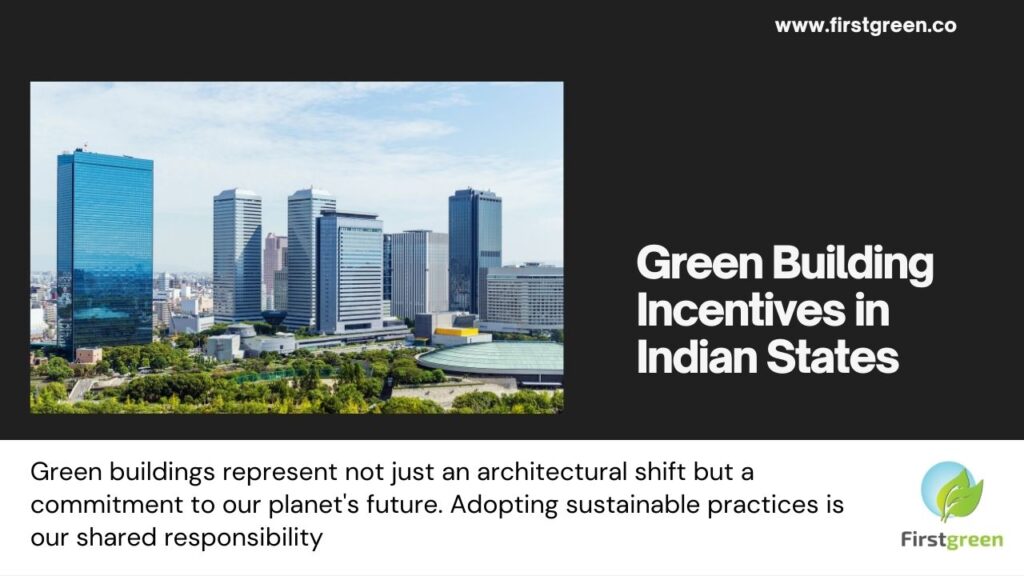Green Building Incentives in Indian States: Driving Sustainable Construction

Introduction
India is aggressively pushing towards sustainable development, with green buildings playing a pivotal role in this transformation. Recognizing the importance of environmentally friendly construction practices, the Indian government, across various states, has rolled out a series of compelling incentives. These incentives are designed not only to reduce the environmental impact of new buildings but also to encourage investments in sustainable technologies and practices. This article explores five significant incentives offered across different Indian states, complete with examples and detailed tables showcasing specific benefits.
1. Faster Approval Process
Streamlined approval processes for green building projects are a cornerstone of state policies aimed at encouraging rapid adoption of sustainable building practices. Faster approvals expedite project timelines, thereby reducing holding costs and incentivizing developers to adopt green certifications.
Examples Across States:
- Pune, Maharashtra: Projects meeting green standards can expect approvals to be processed 20% faster than conventional ones.
- Bengaluru, Karnataka: Green projects, particularly those certified by LEED or GRIHA, are given priority in the approval process, significantly reducing wait times.
- Ahmedabad, Gujarat: The city offers an express approval lane for buildings that integrate substantial green technologies, cutting down processing times by as much as 25%.
2. Property Tax Rebate
Property tax rebates serve as a financial incentive for owners to maintain and invest in green practices over the lifetime of the building.
Examples Across States:
- Hyderabad, Telangana: Buildings achieving LEED or GRIHA certification are eligible for up to a 15% rebate in property taxes.
- Kolkata, West Bengal: Green buildings that demonstrate significant energy savings are granted a 10% property tax rebate.
- Chennai, Tamil Nadu: Offers a 20% rebate on property taxes for buildings that achieve over 50% waste water recycling and solar energy utilization.
- Haryana: about 15% extra FAR
3. Reduction in Permit Fees
Reducing permit fees lowers the initial financial barrier for developers to adopt green building standards from the project’s inception.
Examples Across States:
- Bhopal, Madhya Pradesh: A 50% reduction in permit fees is offered for buildings incorporating solar power systems.
- Jaipur, Rajasthan: There is a 30% fee reduction for projects that meet specific water recycling standards.
- Chandigarh: Provides a 40% reduction in building permit fees for projects that achieve zero-discharge status by effectively managing waste and water resources.
4. Increased Floor Area Ratio (FAR)
Allowing additional built-up area is a potent incentive that directly affects the economic viability of green projects by enabling developers to maximize their usable space.
Examples Across States:
- Mumbai, Maharashtra: Provides an additional 5-10% FAR for buildings achieving a ‘Gold’ rating or higher in green building certifications.
- Chennai, Tamil Nadu: Offers an extra 3-5% FAR for using sustainable architectural designs and materials.
- Kochi, Kerala: Green projects can avail up to 8% additional FAR, which is a significant boost, particularly for residential projects in urban areas.
5. Utility Rebates
Utility rebates are a direct way to reduce operational costs for green buildings, making them more appealing over the long term.
Examples Across States:
- Delhi: Offers up to 20% off on electricity bills for buildings that meet stringent energy efficiency standards.
- Bangalore, Karnataka: Provides rebates on water bills for buildings that install comprehensive rainwater harvesting systems.
- Surat, Gujarat: Incentivizes the adoption of LED lighting and energy-efficient HVAC systems with up to 25% rebates on electricity tariffs.
Conclusion
The range of incentives provided by different states in India highlights the country’s commitment to reducing the carbon footprint of its built environment. By offering benefits such as tax rebates, expedited approvals, and financial discounts, the government not only fosters the growth of the green building sector but also encourages developers and property owners to adopt sustainable practices. These incentives align with global sustainability goals and showcase India’s proactive approach to environmental stewardship and urban planning.
As awareness of these incentives increases, along with the visible benefits they bring, more developers are expected to join the green building movement. This shift not only benefits the planet but also enhances the quality of life for residents and yields long-term economic benefits for developers and owners alike. With continuous support from the government and the evolving nature of green technologies, the landscape of Indian urban development is set to be transformed, promising a greener, more sustainable future.